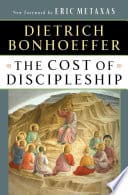Archaeologists have uncovered a groundbreaking discovery in Bahrain. Beneath a cemetery in Samahij, they found an eighth-century Christian palace, believed to be the first physical evidence of a Christian community in the Middle East.
This ancient palace, once owned by the diocese’s Bishop, boasts eight rooms adorned with crosses and Christian symbols. Archaeologists found wine glasses and textile needles, likely used in worship rituals. The palace also revealed graffiti etched into the plaster displaying a Chi-Rho, the first two letters of the Greek Khristos Christ.
The Church of the East, or Nestorian Church, flourished in this region before Islam overtook it in the seventh century. Radiocarbon dating places the ruins at nearly 2,000 years old, with the site abandoned following the population’s conversion to Islam.
This discovery marks the first evidence of Christian communities in Bahrain and one of the oldest Christian buildings found in the Arabian Gulf. Researchers noted that the relationship between Meshmahig (the diocese) and the central church authorities was often fraught, with one bishop excommunicated in 410 and another condemned in the mid-7th century.
Tim Insoll, the lead researcher at the University of Exeter, expressed excitement over the findings. “We were amused to find someone had also drawn part of a face on a pearl shell in bitumen, perhaps for a child who lived in the building,” he said. “This is the first physical evidence found of the Nestorian Church in Bahrain and gives a fascinating insight into how people lived, worked, and worshiped.”
A museum to preserve and display these findings will open in 2025, promising to shed more light on this significant chapter of history.

















Leave a Comment